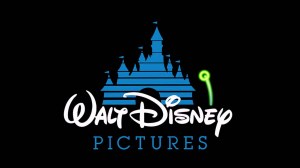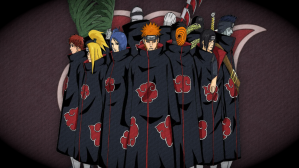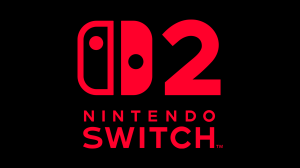Thanks to directing films like Saw, Insidious, and The Conjuring, filmmaker James Wan is considered by many to be one of the most ambitious and compelling horror voices working in genre storytelling, with his cinematic style being so impressive that he has transitioned to big-budget action films like Fast 7 and Aquaman. Last year, Wan delivered his latest unsettling narrative with Malignant, a project whose unique blend of themes instantly earned it a passionate following. Given his tendency to inspire expansive worlds, many fans are also hoping this film is merely the first of many entries in this bizarre world. Malignant is out now on 4K Ultra HD Blu-ray.
Videos by ComicBook.com
The film is described, “Malignant is the latest creation from Conjuring universe architect James Wan (Aquaman, Furious 7).The film marks director Wan’s return to his roots with this original horror thriller.In the film, Madison is paralyzed by shocking visions of grisly murders, and her torment worsens as she discovers that these waking dreams are in fact terrifying realities.”
ComicBook.com caught up with Wan to talk how the film was brought to life, its storytelling potential, and his scrapped Aquaman spinoff The Trench.

ComicBook.com: For almost a full year now, this question has been bugging me about Malignant. I live in Seattle and as I was watching the movie, I was watching the movie in the neighborhood North Beacon Hill. So you can imagine me watching this movie in my home in North Beacon Hill, wondering why, out of all of the Seattle neighborhoods like Ballard, Fremont, Queen Anne, all of the bigger ones, why was North Beacon Hill specifically mentioned in Malignant? What was the significance?
James Wan: I wish I had more to say other than it’s a great-looking neighborhood. It’s cinematic, just the way its layers made it, like, the houses on the hills and all that just made it look really cool. And also, it just fit the story. Ultimately, it was the right look of what we wanted in there with the leafy streets and the more affluent quality to it.
Well, thank you. I appreciate you answering because it freaked me out to have them say my neighborhood while watching it in my house.
That’s really cool. So you didn’t watch it anywhere else, you were actually there when you watched the film? That’s cool.
When Malignant came out, it really captured fans in a super unique way compared to something like The Conjuring, which I feel is a little bit more accessible to wider audiences. The people who love Malignant really love Malignant, and it wasn’t for everybody, so did you anticipate that as you were developing the movie? Knowing the blend of genres and the storyline and the ambitions, that it won’t be for everybody, but it will really connect with certain audiences?
Well, going into it, I knew that it was a very specific kind of horror film that I wanted to make. I knew that I wasn’t necessarily going in to make an outright, across the board, mainstream-mainstream genre film that I guess I’ve become known for. But I’ve always said that pretty much everything that I’ve made has been things that are personal to me and I make the movies that I want to see, at the end of the day.
Even Saw was a strange little horror film that just so happened to have caught fire with the general public, and so I wanted to go back and make a movie like Saw, like Insidious, that, again, Insidious was another strange, quirky one of my low-budget horror films, and because I went into Malignant with that a mentality, I knew I wanted to do something in the same spirit as Insidious and Saw.
I guess I just made a movie that was super charged in that direction that the rest of the mainstream crowd were like, “What the f-ck is this movie? We thought we were getting another supernatural ghost story from James like The Conjuring,” but instead, they got something different, and I think that did turn a big chunk of people off, but like I said, I feel like in between my big movies, this is where I have the opportunity to take the chance to do something different, to not make a movie that just adheres to the norm of commercial filmmaking. I still want to make a commercial movie. It’s still a film with a traditional beginning, middle, and an end, but that doesn’t mean that I cannot have all this really fun stuff in between it.
You mentioned all these other movies, Saw, Insidious, and The Conjuring that have just become these defining, pop-culture horror movie franchises of the past two decades. Obviously, you don’t anticipate something like that happening. You don’t approach making those movies to say, “Well, here’s one, but here’s the 10 others that I want to make also,” and it’s not until you spend time with those movies that you realize the untapped potential. I assume it’s the same thing with Malignant, you wanted to tell this one story, but now that you’ve had some more time, you’ve been playing in other sandboxes like with Aquaman, has your brain started to come back to Malignant to think, “Could there be more stories to tell in this world? Could we explore other subjects at this research facility?”
That’s pretty much what I do from the very start, and not so much thinking that, “Oh, there’ll be a sequel for this,” but I try to, with all my films, I try to have an idea of what the bigger world would look like, the umbrella universe, if you will. That way, when I make this particular film, I know what is happening at every moment of the film, at every moment of the storytelling, if you will.
Because I know the bigger world that the story takes place in, there are potentially other stories to tell, and that usually is dictated by what the audience wants. If they want more stories, then I have more stories to pull into it. That’s my approach, even all the way back to my first film with Saw, is I do know the bigger world, like [writer] Leigh [Whannell] and I knew the bigger world, and if we were fortunate enough to tell other stories, we have stories ready to tell.
Same with Insidious, same with The Conjuring. In the case of The Conjuring, it’s a more obvious one, right? Because the Warrens, it’s based on these real-life people who have investigated many cases, and so that’s a more obvious one to pull from. But the same with the Aquaman world, as well. I create this world, and then within that, you can tell many different stories within the universe.
It feels like it’s safe to put out there to the fans, “Hey, fans, if you want more Malignant, keep telling people how much you love Gabriel and how much you want more Malignant.”
Well, that’s exactly it. I joked that, for the fans out there that want more of the films, that they should start a groundswell movement. Start a hashtag of a Malignant sequel.
Hey, between Photoshops of Gabriel showing up at the Met Gala, and the Fangoria Chainsaw Award for Best Wide-Release Movie, James, I think Malignant‘s doing pretty well, but I’ll help give that extra push. Lastly, talking about these bigger worlds, these bigger franchises, you mentioned Aquaman and there was going to be a more horror-themed Trench-Black Manta movie, do you think some of those horror ideas you were planning for that could become its own thing? Could you use some of those bigger concepts you were hoping to explore in that spinoff and reimagine them for its own non-DC Comics horror movie?
Listen, I feel like everything I come up with, everything I do, if I come up with something that I don’t end up using, that doesn’t mean that I cannot be inspired to use that in a different way. That’s my problem, is I come up with a lot of ideas and I have so many ideas just percolating, but obviously, I can’t use all of them. So I would say of all the different thoughts and ideas I’ve come up with, I end up using maybe 20-30% of them in my work, and so I do have a drawer full of ideas that could develop into something else.
Well, I can’t wait to see your multiversal movie where every James Wan idea gets put into it, and in the honor of the A24 movie Everything Everywhere All at Once, it’s called Everything Everywhere All at Wan-ce.
Very nice. I like that. That should be the title of your article. How about that? Now that’s a good title.
Malignant is out now on 4K Ultra HD Blu-ray.
This interview has been edited for length and clarity. You can contact Patrick Cavanaugh directly on Twitter.








